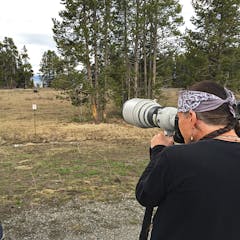
Articles on Photography
Displaying 1 - 20 of 245 articles

A major new exhibition and book showcase Aotearoa New Zealand’s earliest photography, and how the new technology was integral to the colonial project.

Photography and rock-climbing have always shared a close relationship.

Your phone can’t take a perfectly clear picture of a solar eclipse like a professional camera can, but there are lots of other creative directions you can take to capture the rare moment.

Apart from technical aspects, a successful photograph of the eclipse serves as a lasting reminder of the sense of wonder and the feeling of being part of something larger than ourselves.

The anonymous artists and activists behind no-photo2024 are highlighting the exclusion of Palestinian photographers from PHOTO2024.

What can we learn when a picture inspires ten thousand Tweets and TikToks.

Publishers are starting to develop guidelines around the use of generative AI in photos.

The Princess of Wales is caught in a social media storm after the release of a clearly edited photo. But image editing is increasingly common, and your phone can even do it without you knowing.

Ernaux’s sparse writing about everyday encounters gains a new quality against photos from the MEP’s collection

The caption may say that only scientists and trained professionals should handle wild animals, but viewers remember the image, not the words.

The expansion of social media and ubiquity of smartphone cameras has had a major impact on tourists’ behaviour.

A photographer by profession, this year I decided to detox from photographing. The detox lasted two months. My aim was to get off my phone and be more present in my life.

His witty, gentle and beautifully observed images propelled Erwitt to become one of the best-loved photographers of the 20th century.

Camera rolls reveal how photography is transforming in the smartphone era.

Photography: Real and Imagined at the National Gallery of Victoria can be interpreted as an attempt to make sense of photography’s history.

For Zoe Leonard, photography is not just about using a camera. Photography is also about a way of thinking, seeing and interacting.

Hoda Afshar is one of Australia’s most significant photo media artists. A Curve is a Broken Line at the Art Gallery of New South Wales is her first major survey exhibition.

Australian writer Charmian Clift was born 100 years ago today. One rivetting photograph of Clift captures the existential yin and yang explored in her work.

During the pandemic, few of our life events felt worthy of a single Instagram post, inspiring users to celebrate the beauty in mundanity with ‘dumps’.

In You’ll Know It When You Feel It at the Institute of Modern Art, Raphaela Rosella and her co-creators have sought to reclaim and counteract the narratives formed by state records.





